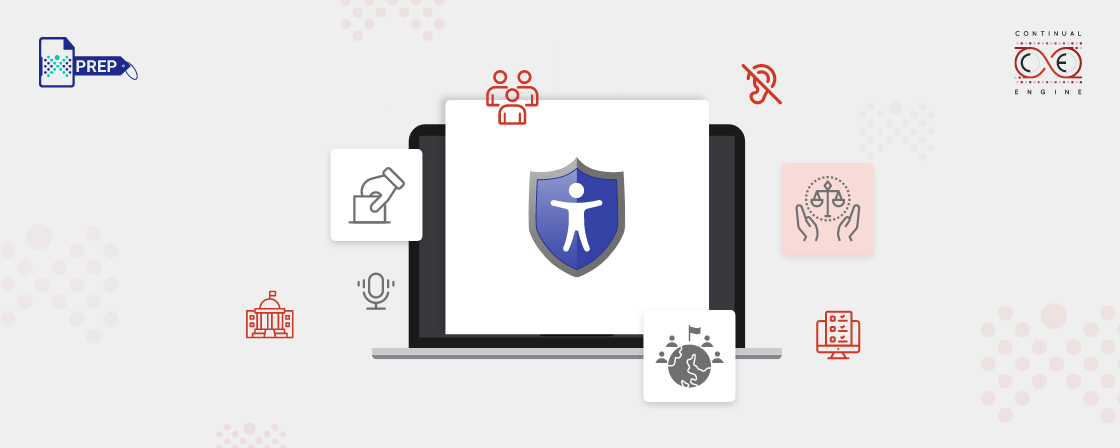Key Pointers:
- Ensuring web and mobile accessibility is important to provide equal access to information and services to all users, including those with disabilities.
- Web Content Accessibility Guidelines (WCAG) 2.1 outlines the principles of POUR (Perceivable, Operable, Understandable, Robust) for making online content accessible.
- Public sector organizations are responsible for making their websites and online services accessible to all citizens.
- Non-compliance with accessibility regulations may result in legal action, and organizations must publish an accessibility statement outlining their efforts to make their content accessible.
- Creating accessible content can be challenging for organizations, but tools like Continual Engine can help automate the process and reduce costs.
- Prioritizing accessibility is crucial in promoting inclusivity and equal access to information and services and can help create a more inclusive digital world.
What is Accessibility?
The World Health Organization reports that 2.2 billion people worldwide have a vision impairment, highlighting the need for accessible digital services. Publishers and website designers have a crucial role in making their content accessible to all, not just to comply with the Web Content Accessibility Guidelines (WCAG), but to ensure inclusivity and equal access for everyone. By prioritizing accessibility, they can help create a more inclusive digital world.
What is the Need for Web and Mobile Accessibility for the Public Sector?
The importance of accessible public sector websites cannot be overstated. Governments and public institutions must ensure that their services and information are available to all citizens. Accessible websites are especially important for people with disabilities, who may face additional daily barriers to accessing information and services. For example, individuals with visual impairments rely on screen readers or other assistive technologies to access online content. If a website is not designed with accessibility, it can be difficult or impossible for these individuals to access the information they need.
Unfortunately, many public sector websites are not fully accessible. The study by Socitm found that 4 in 10 council homepages failed basic accessibility tests. This is a concerning trend, as many people with disabilities are excluded from accessing critical information and services. To address this issue, public sector organizations must prioritize accessibility when designing and maintaining their websites. This means following best practices for web accessibility, such as using alternative text for images and ensuring that website navigation is easy to use with a keyboard. By prioritizing accessibility, public sector organizations can ensure that all citizens have equal access to their services and information.
- Perceivable: The content should be presented in a way that can be perceived by all users, including those with visual or hearing impairments. This can be achieved by providing alternative text for images, video captions, and audio content descriptions.
- Operable: The content should be operable by all users, regardless of their ability. This can be achieved by ensuring that all content is accessible through keyboard navigation and that all interactive elements are clearly labeled.
- Understandable: The content should be presented in a way that is easy to understand. This can be achieved by using clear and simple language, avoiding jargon, and explaining complex concepts.
- Robust: The content should be robust enough to work with a wide range of technologies, including assistive technologies. This can be achieved by using standard web technologies and avoiding proprietary or non-standard technologies.
Whom do these Accessibility Regulations Apply?
When Complying with Accessibility Regulations it may be a Disproportionate Burden?
- Features of their online content that are not accessible, along with reasons.
- Accessible alternatives to their content.
- Contact details for reporting or requesting inaccessible information.
- Understand how accessibility regulations apply to their organization.
- Check their website for accessibility problems.
- Make a plan to fix any issues.
- Publish an accessibility statement.
Continual Engine as a Tool to Publish Accessible Content
One such tool is PREP, an AI-powered PDF remediation tool that creates documents that are accessible and compliant with WCAG 2.1. Invicta™ is another tool that automates the creation of alt-text for complex images and ensures videos and presentations are accessible. By choosing Continual Engine, public sector bodies can begin making their content accessible, meeting compliance standards, and fulfilling their purpose of providing equitable services to every individual.
